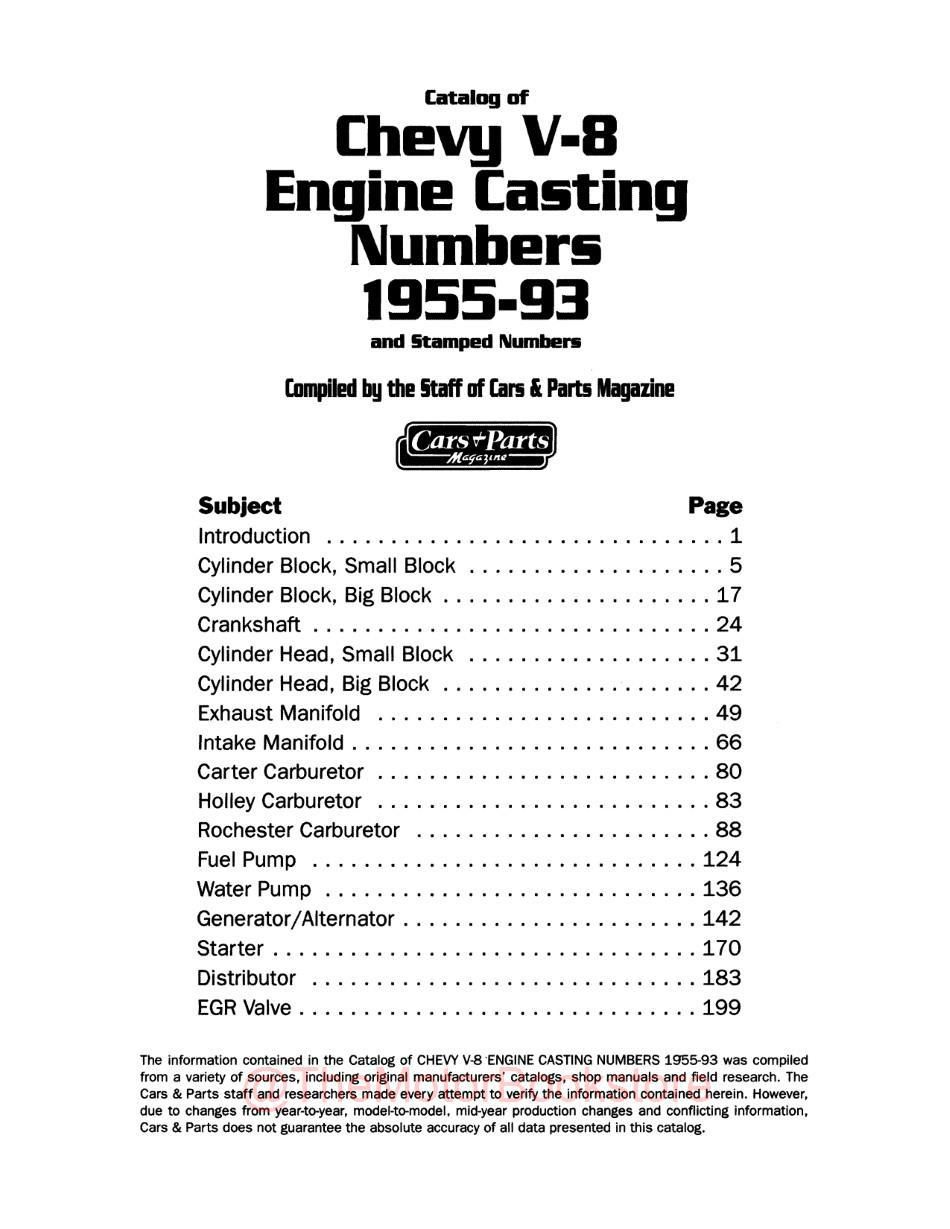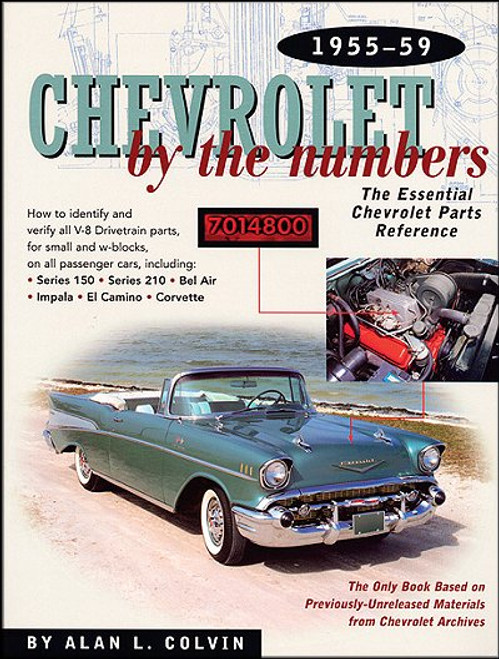Catalog of Chevy V-8 Engine Casting Numbers 1955-1993 and Stamped Numbers
The Chevy V-8 Engine Casting Numbers 1955-1993 Catalog, written by Car & Parts Magazine, covers two basic engine identification needs:
- The first is for Chevy collectors trying to identify a Chevy V8 engine component in a salvage yard, swap meet, etc.
- The second is for the collector who wants to know if a given part will be "correct" for their vehicle.
This guide allows you to identify a component by finding the casting or stamped number, then turning to the appropriate section of the book, and look it up.
1955-1993 Chevy V8 Engine Casting Numbers Catalog, includes support for the engine block, heads, crankshaft, intake and exhaust manifolds, carburetor, fuel pump, water pump, generator/alternator and EGR valve.
Book Excerpt: Cars & Parts Catalog of Chevy V-8 Engine Casting Numbers 1955-1993 and Stamped Numbers CYLINDER HEAD: SMALL BLOCK
Small-block Chevy heads may be the most confusing and most often misidentified of all major Chevy engine components. The same basic head design has been used since 1955, but significant changes that are difficult to notice at first glance have been made over the years, especially difficult to see when the engine is installed in a vehicle with the valve covers in place. Perhaps the greatest cause of confusion with small-block Chevy heads is the external "casting mark" that many people use for quick identification. The most widely known of these is the "double hump" mark found on many different medium and high performance heads of the '60s. Many enthusiasts mistakenly believe that every Chevy head with this mark is a scarce "fuelie" head that was originally installed on a special high-performance muscle car, such as a fuel-injected Corvette.
CRANKSHAFT
Chevy crankshafts can be divided into several categories: big and small block, large and small journal, cast iron or forged, internally or externally balanced, and round-type or two-piece rear main oil seal. "Casting" numbers on Chevy cranks can be a bit confusing. First, while cast-iron cranks have a casting number, forged cranks have less prominent numbers that are obviously not "cast" at all. Also confusing is the fact that you can never be sure how many digits of the number will actually appear. Many times only the last four digits are on the crank. For example, number 3941178 crankshaft might bear the engine number, or it might have only the last four digits. And that is exactly how you will hear it described, as an "1178" crank by collectors and historians. The casting number on a crankshaft will identify its application, but there are other features that should also be checked. The first thing to look at is the flash or parting line on the crankshaft. A parting line appears at the point where two pieces of a mold come together. This line will identify it as a cast-iron or forged-steel crankshaft. Cast-iron crankshafts have a narrow parting line while forged-steel crankshafts have a wide parting line, with the appearance of excess metal having been cut away. Forged-steel crankshafts are stronger than cast-iron crankshafts and were usually used in special high-performance small-block and big-block engines prior to 1973.
Pick up the Catalog of Chevy V-8 Engine Casting Numbers 1955-1993 and stamped numbers today, so you can start saving tomorrow. The Motor Bookstore offers Fast and Free Shipping to our US48 customers and very cheap shipping to all others, especially if you purchase multiple books...
Subject: Chevy casting numbers catalog - 1955, 1956, 1957, 1958, 1959, 1960, 1961, 1962, 1963, 1964, 1965, 1966, 1967, 1968, 1969, 1970, 1971, 1972, 1973, 1974, 1975, 1976, 1977, 1978, 1979, 1980, 1981, 1982, 1983, 1984, 1985, 1986, 1987, 1988, 1989, 1990, 1991, 1992, 1993. | ISBN-10: 1880524139 | ISBN-13: 9781880524138













